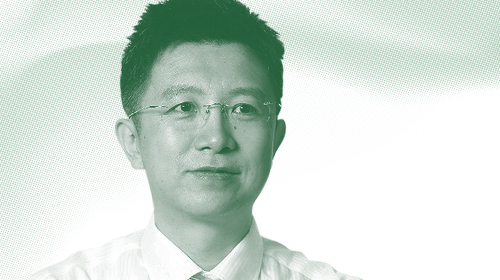A Chinese Perspective on Artificial Intelligence
Interview with Haifeng Wang, Baidu
Do the trends in AI patent filings and scientific literature described in the WIPO Technology Trends correspond to your industry knowledge and experience?
Among AI techniques, machine learning, particularly deep learning in nearly the past ten years, has been well studied and significant progress has been made. And for functional applications, computer vision, speech processing and natural language processing have also shown vast industrial potential and have already been utilized in practical applications. These developments correspond to the trends in the patent filings and scientific publications.

Research of AI technologies in Chinese universities is now catching up with top class peers in the world.
Haifeng Wang
The research in the report shows a remarkable number of patent filings coming from Chinese universities and research institutes in the area of Al. How do you explain these results and the areas in which Chinese universities are particularly active?
Research of AI technologies in Chinese universities is now catching up with top class peers in the world. For some Al techniques, the gap between Chinese universities and research institutions and other Al giants has been filled up quickly and the gap is becoming smaller and smaller; and for some functional applications, we have made great progress and may be a few steps ahead of other key players. Behind these results, there is a continuous growth of the AI talent pool in China thanks to the efforts of Al-related enterprises such as Baidu, cooperating with Chinese universities to accelerate technological innovation and cultivate talent in the field of artificial intelligence.
Do national Al policies have an impact on the level of activity?
Artificial intelligence has been included in China’s National Strategic Plan since 2016. The Government has issued numerous policies to support the development of AI, from capital and intellectual property protection, to human resources development and international cooperation. Besides the emphasis on the theoretical studies, these policies also leverage the resources on the integration of Al into the real economy.
Do you see any shift in the prioritization of AI since the latest AI “boom”?
The latest AI “boom” could be generally summarized as the big leap of functional applications thanks to the explosion in big data, computing power and continued advancing algorithms. Now comes a time when Al applications make a real impact on the economy. AI applications could be characterized as systematic integration with different functional applications and continue to evolve with real data and vertical commercial scenarios.
What are the critical factors in bringing AI from research to the market?
Data and applicable scenarios are more critical in the process from research to the market. The combination of different AI techniques and functional applications is also important to bring academic results to industrial application.
In addition, Chinese universities, research institutions and private companies are working closely to conduct Al-related research and make the resulting technology transfer smooth, such as implementing AI talents training programs, setting up cooperative laboratories, etc.
What do you think will be the next big thing in AI?
While we may hardly name one as the next big thing in Al, we may however consider where the challenges and opportunities of AI lie: human-like learning mechanisms, functional applications synergized with knowledge, combinations of different functional applications and integration with hardware, AI applications customized with real data and vertical scenarios.
What do you think are the challenges and opportunities for AI?
For AI techniques, one of the biggest challenges is the study on intelligence mechanism of learning from small size of samples with low energy cost. For functional applications, advanced technologies such as computer vision, speech processing and natural language processing might make it to the next level by utilizing learned knowledge.
For industry, there is the trend to combine hardware with software to make AI technologies more practically applicable. Deep learning frameworks with chips for AI could be another opportunity for players aiming to dominate the future AI industry.
For application systems, the need for the combination of different AI techniques and functional applications is getting more serious. AI application systems also need to be integrated with business scenarios.
To what extent is AI part of Baidu’s business strategy?
Baidu started its layout of Al in 2010, pouring R&D efforts into natural language processing, speech processing, machine learning, computer vision, deep learning, knowledge graph, and so on. In 2013, Baidu announced the world's first in-house institute focusing on the study of deep learning. In March 2017, Baidu set up a new business group, the Artificial Intelligence Group, to organize Al-related departments together, aiming to better develop AI technologies and promote Al applications. Currently, Baidu is among the top AI players in the world. It has more than 10,000 R&D engineers, and the annual R&D investment is about US$2 billion. Among them, artificial intelligence R&D accounts for a large proportion. Baidu's existing business is based on or formed by its leading AI technologies and it is continuously widening its AI capabilities to cultivate the ecosystem of the entire industry.
Do you see any interesting shifts among the top industrial players in the various areas of AI?
All top industrial players including Baidu are optimistic about the development trends of AI and are focusing on their own strengths to take further development actions and make further progress.
How do you see the impact of Al on the economy?
Artificial intelligence has already had visible impact on the world economy and may contribute more and more to economic growth. On the one hand, artificial intelligence can complement existing labor and assets and increase worker capacity and capital efficiency; on the other hand, Al may also promote innovations and inspire emerging new industries.